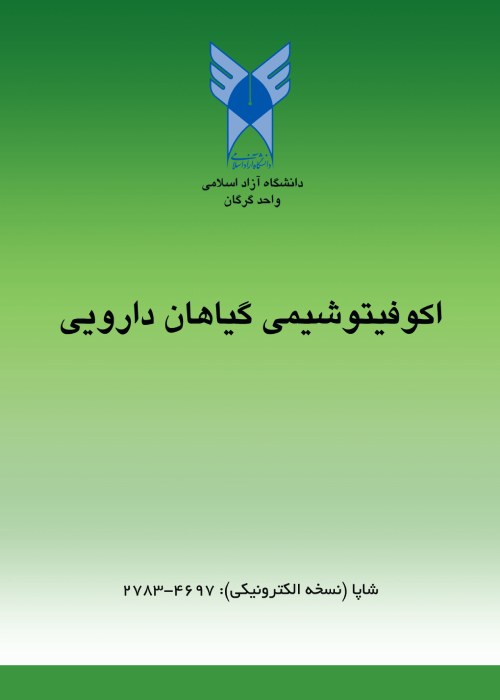Effect of foliar application of urea and salicylic acid on morphological traits and phytochemical compounds of Physalis alkekengi L.
Physalis alkekengi L. belongs to the Solanacae family and its fruit is widely used in traditional medicine to treat diseases such as kidney and urinary tract stones, gout and hepatitis. Since the use of biostimulants in agriculture can be effective in improving the quantity and quality of active ingredients of medicinal plants and improving their yield, in this study, to evaluate the effect of salicylic acid and urea foliar application on morphological characteristics and phytochemical composition of this plant an experiment in a completely randomized design in research greenhouse of Islamic Azad University, Miyaneh Branch in 2019 was conducted. Spraying salicylic acid (0.001, 0.0025, 0.005 and 0.01 mM) and urea (0.25, 0.5, 1 and 2%) was applied in three stages with an interval of 10 days in three repetitions. Extraction was performed simultaneously with harvest (mid-September) by soaking method and the amount of phytochemical compounds in the shoot was determined using HPLC. Based on the results of variance analysis, the effect of foliar application on all morphological traits of shoots (except leaf width), root morphological traits and yield traits was significant. Increasing the concentration of urea and salicylic acid in most of the measured traits showed a positive effect. The highest increase in the mentioned traits was mainly related to the concentrations of 1% and 2% urea and salicylic acid 0.01 mM. Compared to the control, concentrations of 1% urea and 0.01 mM salicylic acid increased the number of fruits (76.8% and 64.6%, respectively), fruit diameter (17.3% and 25.7%, respectively), fruit length (15.07 and 33.4%, respectively), fresh weight of shoots (29.9 and 56.4%, respectively) and dry weight of shoots (28.4 and 61.4%, respectively). In addition, with increasing salicylic acid concentration the amount of luteolin, quercetin, campferol, ferulic acid and chlorogenic acid increased compared to the control treatment.
- حق عضویت دریافتی صرف حمایت از نشریات عضو و نگهداری، تکمیل و توسعه مگیران میشود.
- پرداخت حق اشتراک و دانلود مقالات اجازه بازنشر آن در سایر رسانههای چاپی و دیجیتال را به کاربر نمیدهد.



